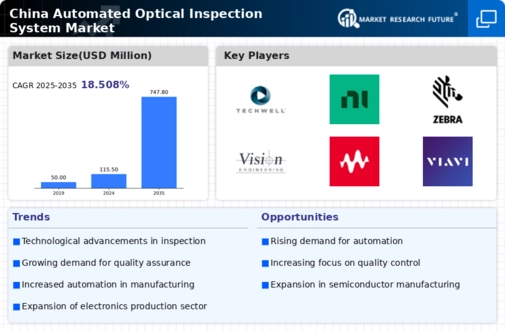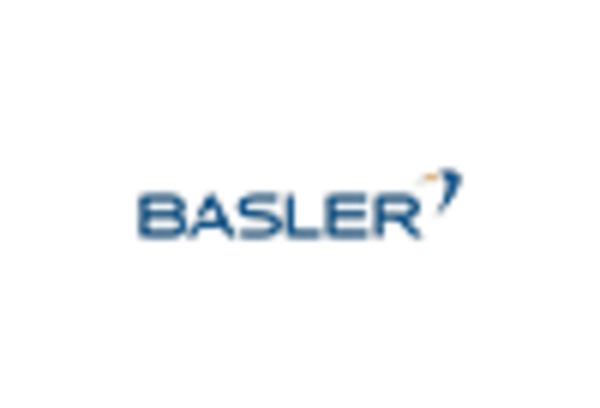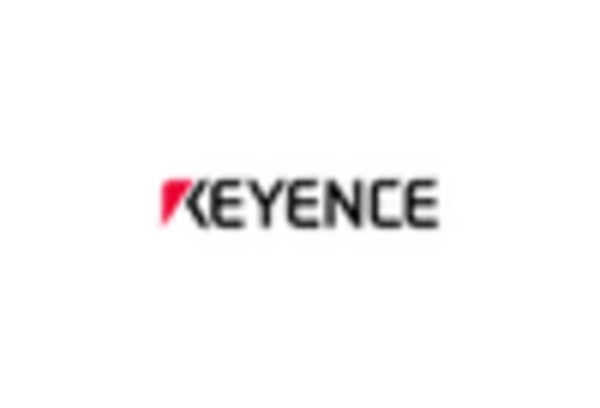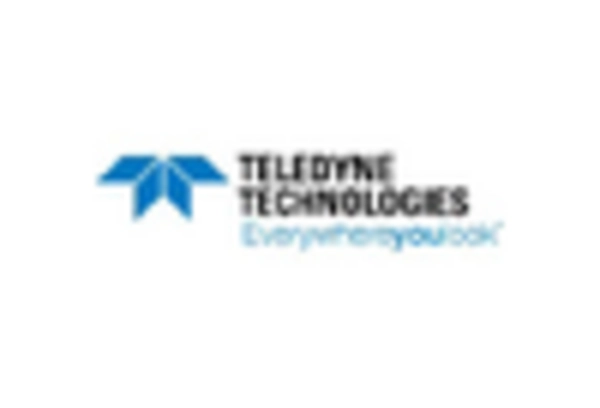Increased Focus on Automation
The trend towards automation in manufacturing processes is a significant driver for the automated optical-inspection-system market in China. As industries seek to enhance productivity and reduce labor costs, the integration of automated inspection systems is becoming more prevalent. In 2025, it is estimated that over 40% of manufacturing facilities in China will adopt some form of automation, including optical inspection technologies. This shift not only improves operational efficiency but also minimizes human error, leading to higher quality outputs. The growing recognition of the benefits of automation is likely to propel the demand for automated optical inspection systems, making it a crucial component of modern manufacturing strategies.
Rising Demand for Quality Control
The automated optical-inspection-system market in China is experiencing a surge in demand driven by the increasing emphasis on quality control across various industries. As manufacturers strive to enhance product reliability and minimize defects, the adoption of automated optical inspection systems becomes crucial. In 2025, the market is projected to grow at a CAGR of approximately 15%, reflecting the industry's commitment to maintaining high standards. This trend is particularly evident in sectors such as electronics and automotive, where precision is paramount. The integration of these systems allows for real-time monitoring and immediate feedback, thereby reducing waste and improving overall efficiency. Consequently, the focus on quality assurance is likely to propel the growth of the automated optical-inspection-system market in China.
Government Initiatives and Support
Government initiatives in China are playing a pivotal role in the expansion of the automated optical-inspection-system market. Policies aimed at promoting advanced manufacturing technologies and automation are encouraging investments in optical inspection systems. The Chinese government has allocated substantial funding, estimated at over $1 billion, to support research and development in this field. This financial backing is expected to foster innovation and enhance the capabilities of automated optical inspection systems. Furthermore, the push for smart manufacturing aligns with national strategies, creating a conducive environment for market growth. As a result, the automated optical-inspection-system market is likely to benefit from these supportive measures, leading to increased adoption and technological advancements.
Growing Electronics Manufacturing Sector
The rapid expansion of the electronics manufacturing sector in China is significantly influencing the automated optical-inspection-system market. With the country being a global leader in electronics production, the demand for efficient inspection systems is on the rise. In 2025, the electronics sector is anticipated to contribute approximately 30% to the overall market revenue of automated optical inspection systems. This growth is driven by the need for high-precision inspection to ensure product quality and compliance with international standards. As manufacturers seek to optimize production processes and reduce costs, the implementation of automated optical inspection systems becomes increasingly vital. Therefore, the flourishing electronics industry is expected to be a key driver for the automated optical-inspection-system market.
Emerging Applications in Various Industries
The automated optical-inspection-system market in China is witnessing growth due to the emergence of new applications across diverse industries. Beyond traditional sectors, such as electronics and automotive, there is an increasing adoption of optical inspection systems in pharmaceuticals, food and beverage, and textiles. This diversification is driven by the need for stringent quality control and compliance with regulatory standards. For instance, in the pharmaceutical industry, automated optical inspection systems are utilized to ensure the integrity of packaging and labeling. As industries recognize the advantages of these systems in enhancing product safety and quality, the market is likely to expand further. The versatility of automated optical inspection systems positions them as essential tools across various sectors, thereby driving market growth.
















Leave a Comment